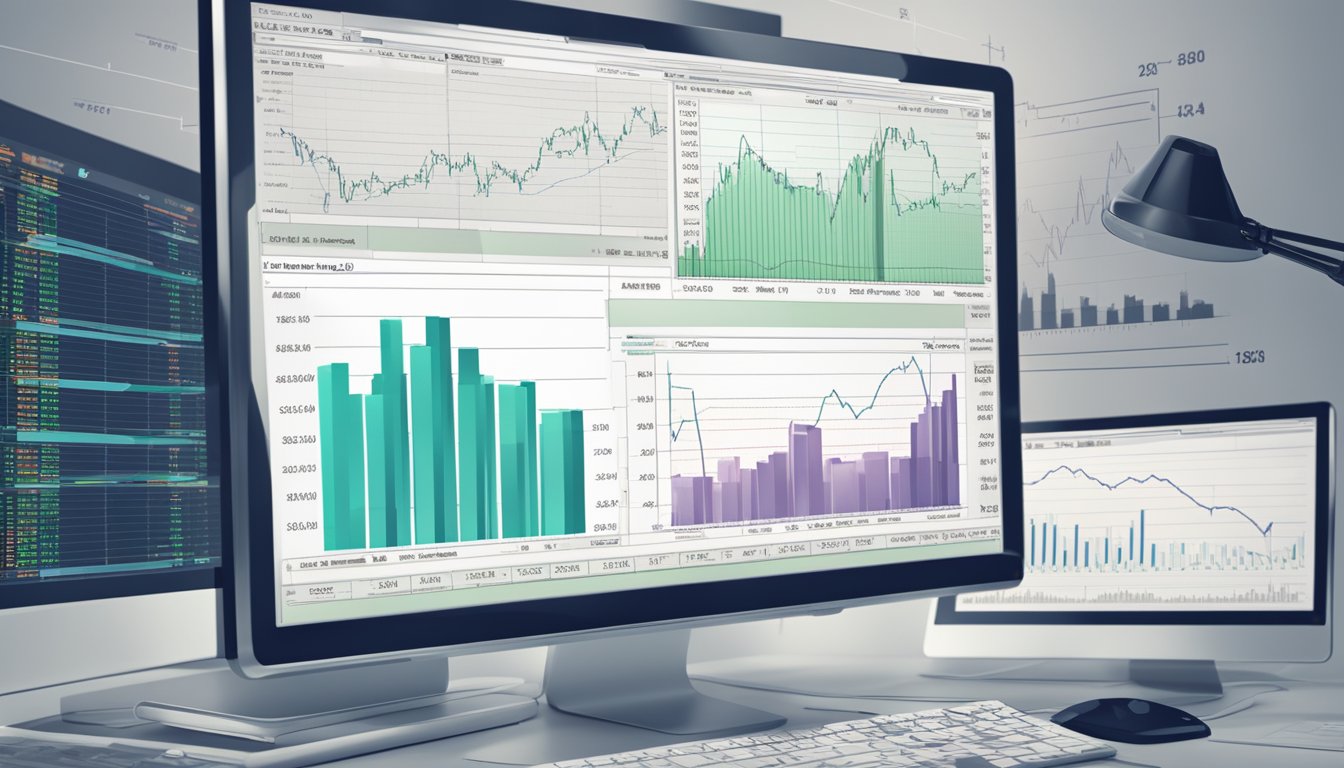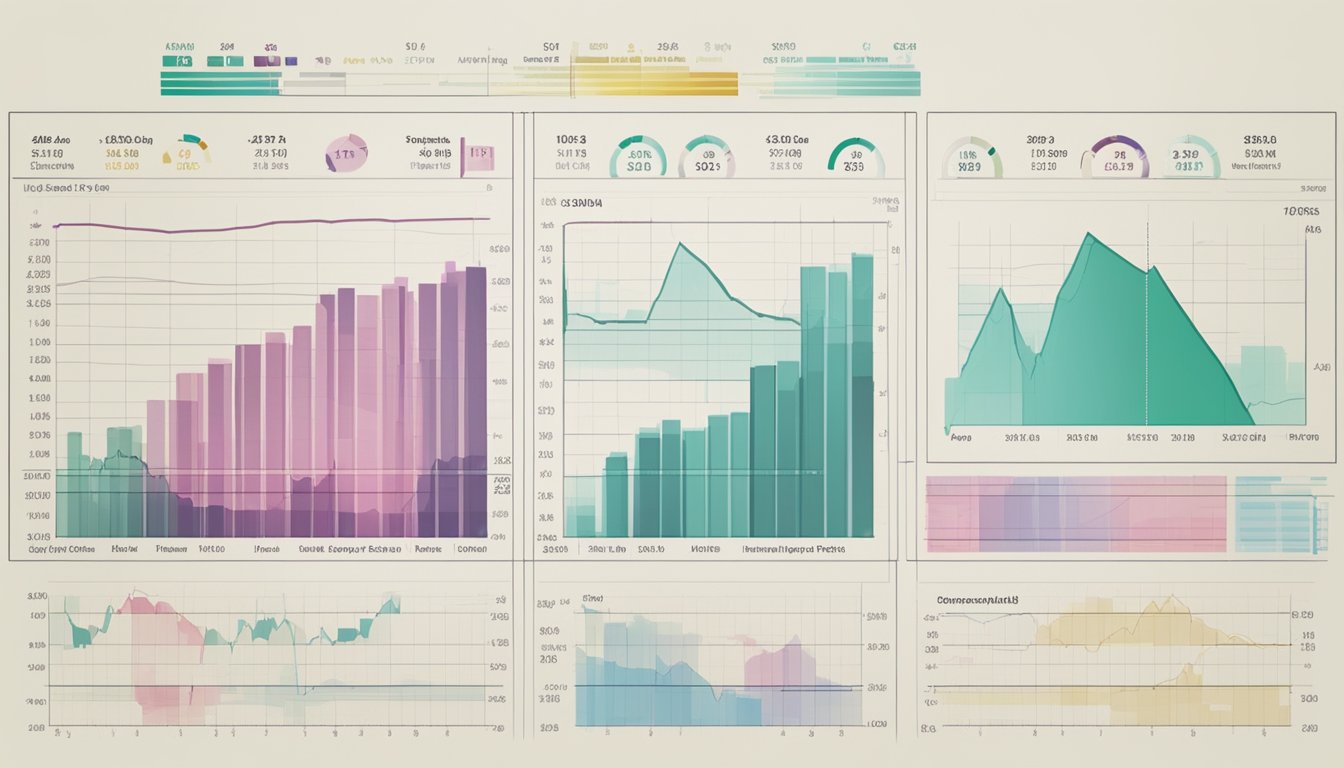Are you looking to invest in the Singaporean stock market but unsure which analysis method to use? Understanding technical and fundamental analysis differences can help you make informed investment decisions. Technical analysis focuses on market trends and statistical data to predict future price movements.
In contrast, fundamental analysis assesses a company’s intrinsic value by examining its financial statements, industry trends, and economic conditions.

In Singapore, both technical analysis and fundamental analysis are widely used by investors. Technical analysis is popular among short-term traders who rely on chart patterns and technical indicators to make quick profits.
On the other hand, fundamental analysis is favoured by long-term investors who seek to identify undervalued stocks with strong growth potential. By combining both methods, investors can gain a more comprehensive understanding of the market and make better investment decisions.
Whether you are a novice or an experienced investor, it is essential to understand the pros and cons of each approach before choosing one. This article will explore the differences between technical and fundamental analysis and their applications in the Singaporean market.
We will also provide tips on using these methods effectively and highlight some of the best resources available for Singaporean investors.
1-Minute Read: Tech Analysis vs. Fundamentals
Are you confused about how stock market pros decide when to buy and sell? It all boils down to analysis, but there are two main approaches: technical analysis and fundamental analysis.
Let’s break it down for you, Singaporean investor!
Technical Analysis: Reading the Market Tea Leaves
Think of technical analysts as market detectives. They study charts and past trading activity, searching for patterns that might predict future prices.
They believe these patterns reflect changes in supply and demand, hinting at where the price might be headed next.
Fundamental Analysis: Understanding the Company’s Core
Fundamental analysts, on the other hand, are like company auditors. They dig into financial reports, industry news, and economic data to assess a company’s worth.
Their goal? To understand if a company’s stock price accurately reflects its financial health and prospects.
So, Which Approach Wins?
Here’s the key takeaway: there’s no single champion! Both technical and fundamental analysis have their strengths, and many successful investors use a blend of both.
Intrigued to Learn More?
Stay tuned, Singapore! Below, you will delve into the tools and techniques used in technical and fundamental analysis. We’ll help you craft your investment strategy to navigate the exciting world of stocks and build your financial future!
Understanding Investment Analysis in Singapore

If you’re interested in investing in Singapore, it’s essential to understand the different types of investment analysis. There are two main types: technical analysis and fundamental analysis. Knowing the difference between the two can help you make smarter investment decisions.
Key Investment Strategies
Technical analysis involves using charts and other tools to analyse market trends and identify potential investment opportunities. This type of analysis is based on the idea that past market trends can predict future performance. Technical analysts look for patterns in the market, such as support and resistance levels, to determine when to buy or sell a particular security.
On the other hand, fundamental analysis involves looking at a company’s financial statements and other data to determine its intrinsic value. This type of analysis is based on the idea that a company’s actual value can be determined by looking at its financial health, management team, and other factors. Fundamental analysts look for companies that are undervalued by the market and have the potential for long-term growth.
Singapore’s Financial Landscape
Singapore is a hub for financial services in Asia, with a well-developed financial market offering various investment opportunities. The country’s stock market, the Singapore Exchange (SGX), is one of the largest in Asia and provides a wide range of securities, including stocks, bonds, and derivatives.
Investors in Singapore have access to a range of investment products and services, including mutual funds, exchange-traded funds (ETFs), and robo-advisory platforms. These products and services can help investors diversify their portfolios and manage their risk.
Regarding investment strategy, it’s essential to consider your goals, risk tolerance, and investment horizon. Whether you choose technical analysis or fundamental analysis, it’s vital to research and stay up-to-date on market trends and investment opportunities. With the right approach, investing in Singapore can be a rewarding experience.
Fundamentals of Fundamental Analysis

If you’re a long-term investor, then fundamental analysis is essential to evaluate a company’s intrinsic value. Here are the key aspects to consider when conducting a fundamental analysis.
Assessing the Company’s Performance
The first step is to assess the company’s performance. It would be best to examine the company’s earnings, assets, and financial statements to determine its economic strength and stability.
A company that consistently generates high earnings and has substantial assets will likely be a good investment.
Economic Factors and Industry Trends
The next step is to consider macroeconomic and industry trends. It would be best to consider economic indicators such as GDP growth, inflation, and interest rates to determine the country’s overall financial health.
It would be best to consider industry trends, such as technological advancements, regulatory changes, and competitive landscape, to determine the company’s long-term value.
Financial Statements and Ratios
Finally, the company’s financial statements and ratios would be best. Cash flow and income statements are critical financial statements to consider.
The cash flow statement shows the company’s cash inflows and outflows, while the income statement shows the company’s revenues and expenses. It would be best to consider financial ratios such as price-to-earnings, price-to-book, and debt-to-equity ratios to determine the company’s valuation.
In summary, fundamental analysis is a quantitative approach to evaluate a company’s long-term value based on its financial strength, stability, and industry trends. By assessing the company’s performance, economic factors, and financial statements, you can determine whether a company is undervalued or overvalued.
Essentials of Technical Analysis

If you are interested in short-term trading, technical analysis is essential. Technical analysis involves analysing historical price data, charts, and other statistical trends to predict future price movements.
Technical analysis is adaptable, and you can use it to trade currencies, commodities, stocks, and other financial instruments.
Chart Patterns and Price Movements
The foundation of technical analysis is chart patterns and price movements. Technical analysts use price charts to identify trends, support and resistance levels, and entry and exit points. The most common chart patterns include trend lines, head and shoulders, triangles, and double tops and bottoms. By analysing these patterns, you can make informed trading decisions.
Technical Indicators and Volume Data
Technical indicators are mathematical calculations based on historical price and volume data. They provide traders with valuable information about the market’s momentum and direction. Technical indicators include moving averages, relative strength index (RSI), and Bollinger bands.
Volume data is also a crucial component of technical analysis. By analysing volume data, traders can identify trends and confirm price movements.
Market Sentiment and Trading Psychology
Market sentiment and trading psychology are subjective components of technical analysis. Market sentiment refers to traders’ overall mood or attitude towards a particular sector, commodity, or currency.
Trading psychology involves understanding how emotions can affect trading decisions. Technical analysis can help you identify self-fulfilling prophecies, where traders’ beliefs about the market become true simply because they believe them to be true.
In summary, technical analysis is essential for short-term investors and day traders. You can make informed trading decisions by analysing chart patterns, technical indicators, and volume data.
Technical analysis is adaptable and can be used to trade various financial instruments, including forex, commodities, and shares. Finally, market sentiment and trading psychology are subjective components of technical analysis that can help you predict future price movements.
Tip: Keep Learning
The financial markets are ever-evolving, so continuous learning is vital. Stay updated on new technical indicators and chart patterns.
Explore advanced technical analysis concepts like market internals and Elliott Wave Theory to broaden your analytical toolkit.
Comparative Analysis and Integration

As you delve deeper into the world of investing, you will realise that there are two leading schools of thought regarding analysis: technical and fundamental. While both methods have advantages and disadvantages, combining the two can give you a more comprehensive view of the investment opportunities available.
Blending Technical and Fundamental Perspectives
Blending technical and fundamental perspectives allows you to make more informed investment decisions. Technical analysis uses historical price and volume data to identify trends and patterns. In contrast, fundamental analysis examines a company’s financial health, market value, liabilities, and long-term investment potential.
By combining these two approaches, you can better understand your investment opportunities.
Investment Time Horizons and Goals
When deciding on an investment strategy, it is essential to consider your time horizon and investment goals. Technical analysis is often used for short-term trading decisions, while fundamental analysis is more suited for long-term investments.
Understanding your investment goals and time horizon allows you to determine which approach is best for you.
Risk Management and Adaptability
Investing is not without risk, and it is essential to have a risk management plan in place. Technical analysis can help you identify relative strength and potential entry and exit points, while fundamental analysis can help you identify undervalued or overvalued stocks. Combining the two allows you to develop an adaptable investing strategy that considers market conditions, inflation, interest rates, and other factors affecting your investments.
In conclusion, while technical and fundamental analysis has differences, integrating the two can give you a more comprehensive view of the investment opportunities available. By understanding your investment goals, time horizon, and risk management plan, you can develop a complex and adaptable investing strategy to help you achieve your financial goals.
Warren Buffett once said, “Risk comes from not knowing what you’re doing.” With a deep understanding of technical and fundamental analysis, you can make informed investment decisions and succeed.
Investment Analysis for Different Asset Classes

Regarding investment analysis, it is essential to consider the different available asset classes. Each asset class has unique characteristics and, therefore, requires a different approach to study.
This section will explore investment analysis for different asset classes, including equities and securities, forex and commodities, and bonds and interest rates.
Equities and Securities
Equities and securities refer to shares in a company or other financial instruments that represent ownership in a company. Fundamental analysis is typically used when analysing equities and securities. This involves examining the company’s economic health, including its revenue, earnings, and cash flow. Qualitative factors, such as the company’s management team and competitive positioning, are also considered.
Technical analysis can also be used to analyse equities and securities. This involves examining historical share price data to identify trends and patterns. Technical analysts use charts and other tools to identify potential entry and exit points for trades.
Forex and Commodities
Forex and commodities refer to currencies and physical goods, such as gold and oil. Fundamental analysis is typically used when analysing forex and commodities. This involves examining macroeconomic indicators, such as interest rates and inflation, as well as supply and demand factors.
Technical analysis can also be used to analyse forex and commodities. This involves examining historical price data to identify trends and patterns. Technical analysts use charts and other tools to identify potential entry and exit points for trades.
Bonds and Interest Rates
Bonds and interest rates refer to debt instruments, such as government and corporate bonds, and interest rates set by central banks. Fundamental analysis is typically used when analysing bonds and interest rates. This involves examining the financial health of the issuer, as well as macroeconomic factors that may affect interest rates.
Technical analysis is less commonly used to analyse bonds and interest rates, as these markets are less volatile than equities and commodities. However, technical analysts may use charts and other tools to identify potential entry and exit points for trades.
In summary, when analysing different asset classes, it is essential to consider each market’s unique characteristics. Fundamental analysis is typically used for equities, securities, forex, and bonds, while technical analysis can also be used for equities, forex, and commodities.
Using the appropriate analysis techniques for each market, you can make informed investment decisions and maximise your returns.
Case Studies and Success Stories

Prominent Investors and Their Approaches
When it comes to investment, many successful and prominent investors have made a name for themselves by following different investment strategies. Warren Buffett, for instance, is a well-known investor who has been successful in the stock market by following a fundamental analysis approach. He believes in investing in companies with a robust business model, good management, and a competitive advantage.
On the other hand, some investors follow a technical analysis approach, such as Paul Tudor Jones, known for his macroeconomic analysis and trend-following strategies. He uses charts and technical indicators to identify market trends and make investment decisions.
The key takeaway from these investors is that there is no one-size-fits-all approach to investment. Understanding your risk tolerance and investment goals is important before deciding on an investment strategy.
Singapore’s Investment Successes
Singapore has seen its fair share of investment successes over the years. One notable success story is the Singapore Exchange (SGX), which has grown significantly over the past decade. According to SGX’s 2020 Annual Report, the exchange saw a total market capitalisation of SGD 1.2 trillion in 2020, up from SGD 0.8 trillion in 2010.
Another success story is Singapore’s real estate industry. Despite a recent slowdown in the property market, Singapore remains an attractive destination for property investors due to its stable political environment and strong economic fundamentals. According to data from the Urban Redevelopment Authority, private residential property prices in Singapore increased by 2.2% in 2020 despite the COVID-19 pandemic.
These successes highlight the importance of long-term investments and understanding industry trends. It is essential to conduct thorough research and analysis before making investment decisions, whether in the stock market or real estate.
Frequently Asked Questions
What are the key advantages and disadvantages of using technical analysis for investments?
Using technical analysis for investments has several advantages.
Firstly, it allows you to spot trends in the market and identify potential entry and exit points for your trades. Secondly, it helps you to manage your risk by setting stop-loss orders and other protective measures. However, technical analysis is not without its drawbacks.
One of the main disadvantages is that it can be time-consuming and requires a lot of practice to master. Additionally, technical analysis does not consider the market’s underlying fundamentals, which can sometimes lead to incorrect predictions.
How do fundamental analysis strategies enhance long-term investment decisions in Singapore?
Fundamental analysis is a powerful tool for long-term investment decisions in Singapore. By analysing the underlying economic and financial factors that affect the market, you can make informed decisions about which assets to invest in.
This approach can help you identify undervalued or overvalued assets and potential long-term trends. However, it is essential to note that fundamental analysis requires a lot of research and analysis and can be time-consuming.
Can quantitative methods be effectively applied to both short-term trading and long-term investing?
Yes, quantitative methods can effectively apply to short-term trading and long-term investing. Many quantitative strategies are designed to work across different time horizons. For example, momentum trading strategies can be used for short-term trading, while value investing strategies can be used for long-term investing.
However, it is essential to note that quantitative methods require a lot of data and analysis and can be complex to implement.
What distinct benefits does fundamental analysis offer for forex trading?
Fundamental analysis can be particularly useful for forex trading, as it allows you to analyse the underlying economic factors that affect currency prices. Examining interest rates, inflation, and economic growth will enable you to decide which currencies to buy and sell.
Additionally, fundamental analysis can help you to identify long-term trends in the forex market, which can be helpful for position trading.
Is incorporating both fundamental and technical analysis essential for a robust investment strategy?
While it is not essential to incorporate both fundamental and technical analysis for a robust investment strategy, many successful investors combine the two. Using both approaches, you can gain a more complete picture of the market and make more informed decisions about assets to invest in.
However, it is essential to note that both approaches require a lot of research and analysis and can be time-consuming.
Which should a novice investor prioritise, learning fundamental or technical analysis?
If you are a novice investor, starting by learning fundamental analysis is generally recommended. This approach allows you to develop a deep understanding of the underlying economic and financial factors affecting the market and make informed decisions about which assets to invest in.
Once you have mastered fundamental analysis, you can move on to learning technical analysis, allowing you to identify potential entry and exit points for your trades.
Quick Credit: Your Financial GPS in Singapore
Singapore’s energy is contagious! You’re bustling between chasing career goals, exploring the vibrant culture, and maybe planning that island getaway. But unexpected expenses can be a real downer.
Navigating personal loan options can feel like navigating rush hour traffic – confusing and stressful. That’s why Quick Credit Pte Ltd is different. We are a trusted licensed moneylender, and we understand. We’re here to bridge the financial gap so you can keep chasing your dreams.
Head over to our website and explore your personal loan options. Let’s work together to help you achieve your financial goals and keep living that Singaporean dream when you click here!
